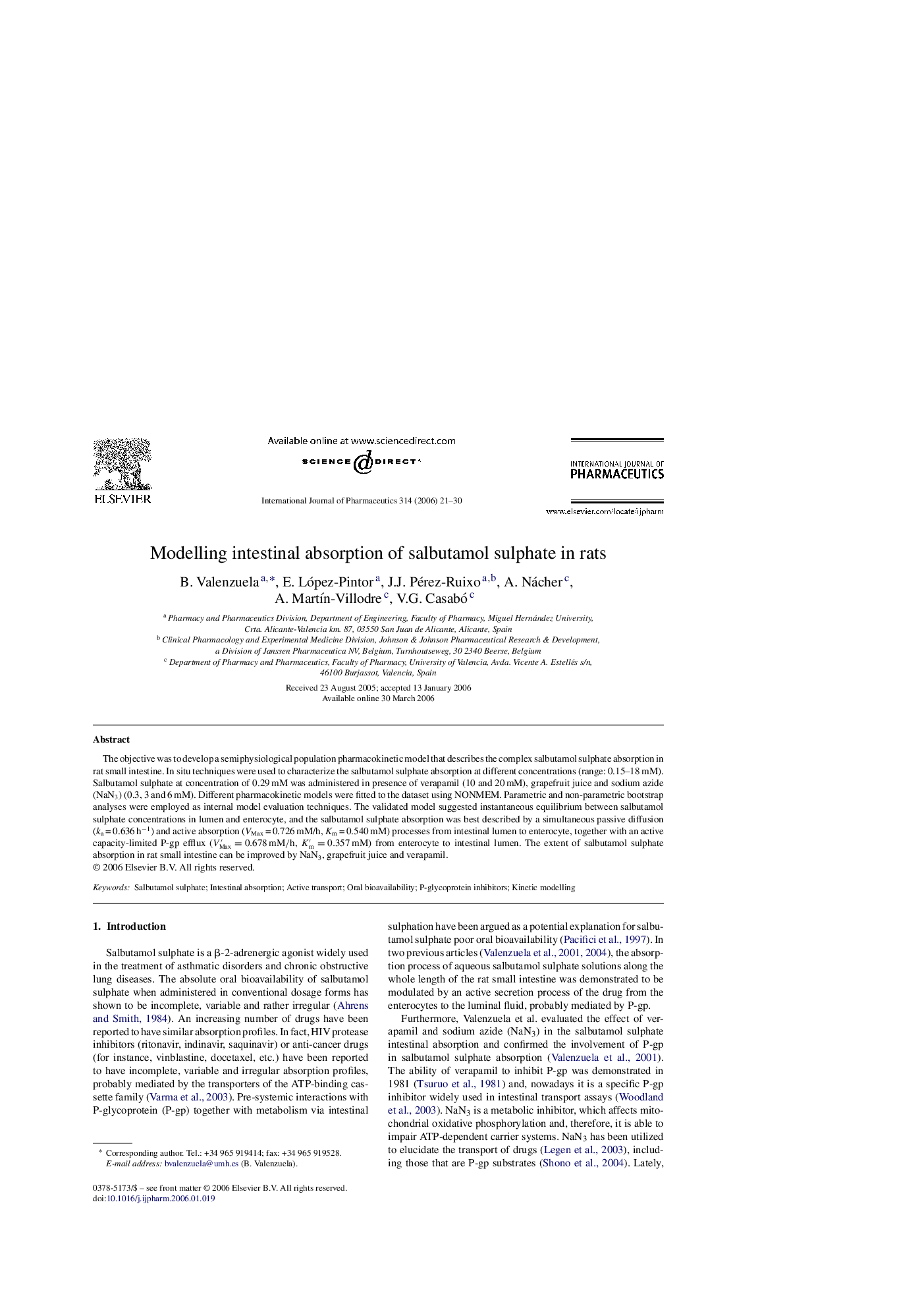| Article ID | Journal | Published Year | Pages | File Type |
|---|---|---|---|---|
| 2507002 | International Journal of Pharmaceutics | 2006 | 10 Pages |
The objective was to develop a semiphysiological population pharmacokinetic model that describes the complex salbutamol sulphate absorption in rat small intestine. In situ techniques were used to characterize the salbutamol sulphate absorption at different concentrations (range: 0.15–18 mM). Salbutamol sulphate at concentration of 0.29 mM was administered in presence of verapamil (10 and 20 mM), grapefruit juice and sodium azide (NaN3) (0.3, 3 and 6 mM). Different pharmacokinetic models were fitted to the dataset using NONMEM. Parametric and non-parametric bootstrap analyses were employed as internal model evaluation techniques. The validated model suggested instantaneous equilibrium between salbutamol sulphate concentrations in lumen and enterocyte, and the salbutamol sulphate absorption was best described by a simultaneous passive diffusion (ka = 0.636 h−1) and active absorption (VMax = 0.726 mM/h, Km = 0.540 mM) processes from intestinal lumen to enterocyte, together with an active capacity-limited P-gp efflux (V′Max=0.678 mM/hV′Max=0.678 mM/h, K′m=0.357 mMK′m=0.357 mM) from enterocyte to intestinal lumen. The extent of salbutamol sulphate absorption in rat small intestine can be improved by NaN3, grapefruit juice and verapamil.
